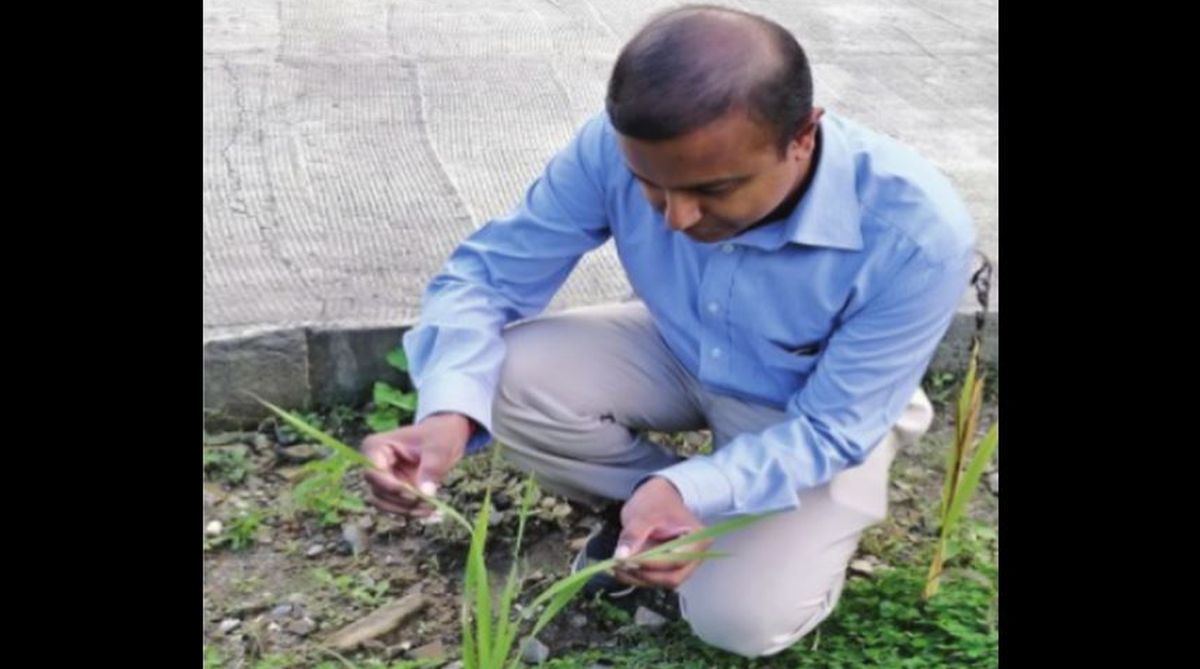Taking a cue from mother nature to meet the demand for water, scientists at Indian Institute of Technology Mandi (IIT) have come-up with nature-inspired material that can harvest water from fog.
The researchers have designed water harvesting surfaces based on the surface structure of the leaves of an ornamental plant called the Dragon’s lily head (Gladiolus dalenii).
Advertisement
A research team lead Dr Venkata Krishnan, Associate Professor of Chemistry at the School of Basic Sciences, IIT Mandi, studied the intricate structures on the body of plants that capture water from air and mimics them to build materials that can harvest water.
Krishan said he decided to take a leaf out of nature’s book to develop sustainable water harvesting technologies as there are several plants in arid and semi-arid regions of the world whose leaves can harvest water from dew and fog.
Many animals and plants reap water from the air in interesting ways as darkling beetles of the Namib Desert of Africa Namib Bushman grass, Bermuda grass and various species of cacti are makes use of fog to convert it into fresh water.
Krishnan and his team have found that three dimensional hierarchical structures on the plant body help in water harvesting, much like the ridges and bumps on the body of the beetles.
The team at IIT Mandi has studied the mechanism by which Bermuda grass harvests water from fog.
The researchers have discovered two interesting structural traits – well-arranged conical spines with sharp edges, in which the deposition of fog droplets occurs and hierarchically organized seed heads that have flattened surfaces with gradient grooves, which transport the coalesced water droplets in a particular direction.
“The gradient of the Laplace pressure and fibre-like hanging phenomenon of the droplet allow the grass to efficiently collect fog. Understanding the structural characteristics of the grass offers ideas for designing material for water harvesting,” he said.
The research team has designed water harvesting surfaces based on the surface structure of the leaves of an ornamental plant called the Dragon’s lily head (Gladiolus dalenii).
The surface patterns on the leaf in micrometre (10-6 m) and nanometre (10-9 m) scales were evaluated in relation to the water harvesting properties and the patterns were replicated using soft lithographic technique as before, onto a polymer material.
The team found a 23 per cent enhancement on the fog harvesting performance of the patterned samples, compared to an unpatterned control sample.
“Collaborative efforts between scientists, industry and policy makers can enable furthering of this technology to provide drinking water to some or all of the 12 per cent of the underprivileged in the country,” he added.
It is worthwhile to mention here that a recent study by WaterAid, a water and sanitation non-profit organisation in London, reports that 163 million people of the 1.35 billion population of India do not have access to clean drinking water.
Solutions to provide drinking water to India’s growing population must not only span policy and behavioural changes but also incorporate scientific and technological innovations inspired by nature.











